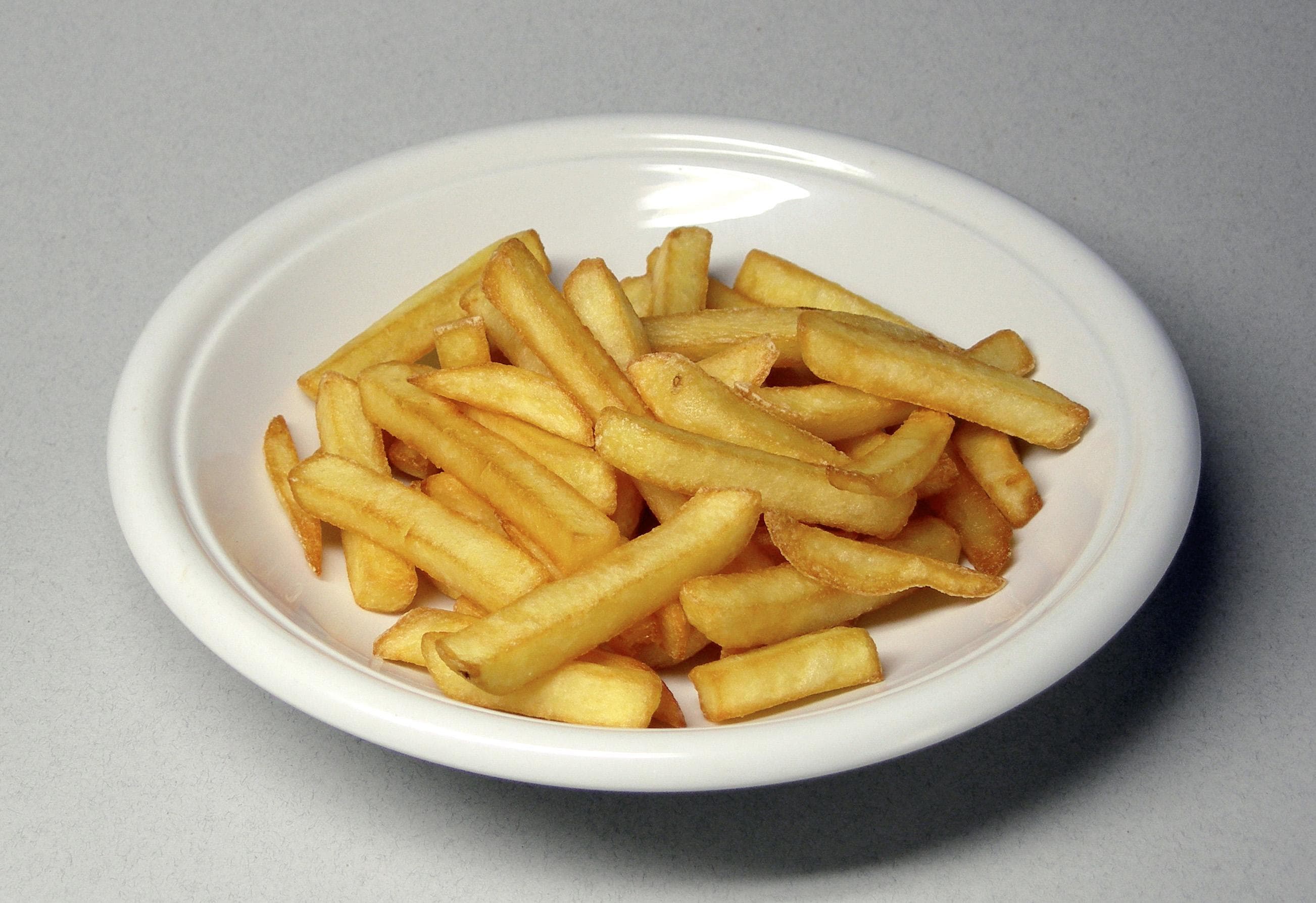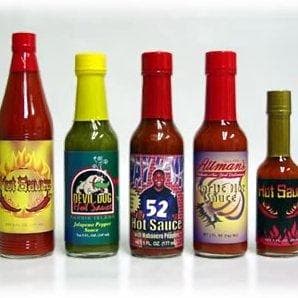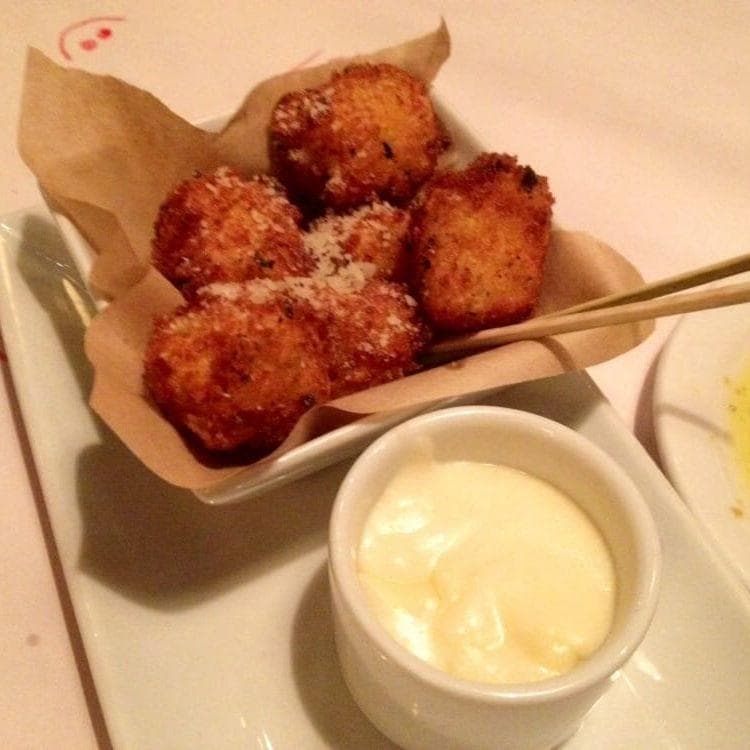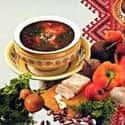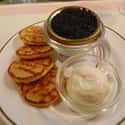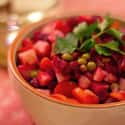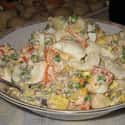(#1) Syrniki
Syrniki, or cheese pancakes, were made from tvorog, a dry-curd cheese, and were a staple for breakfast in the Soviet Union.
Often cooks added fresh or dried fruit to the pancake or included some compote. Once a mixture of cheese, eggs, flour, and other items to taste was ready, it was poured into a buttered skillet and cooked until brown on one side. It was then flipped and browned on the other.
Syrniki could be served with more fruit or with sour cream.
(#3) Borscht
- Jewish cuisine
Perhaps the most identifiable Russian meal, borscht was generally made up of broth, beets, and cabbage with countless other additives, including potatoes, beans, eggs, vegetables, and cream. The dish was served chilled or piping hot depending on the season and preference. Borscht also took on regional differences. In some regions, like Romania, fruit was often added and seasonal availability of foods often dictated what was thrown into the mix.
As a meal consumed by poor Russians long before the rise of the Soviet Union, borscht was touted as a healthy, relatively easy, and delicious meal by military men, Soviet premiers, and cosmonauts alike. Borscht even appears in historical events, like the mutiny on the Battleship Potemkin, and in literary works, like Master and Margarita.
During the Cold War, recipes for borscht remained well-guarded. When it was finally released by the CIA, a traditional borscht recipe from 1948 revealed how beets, fat, bouillon, tomato paste, and vinegar were combined in a closed pot before adding flour, laurel leaves, and seasoning. With cabbage and potatoes incorporated into the mix, borscht was served after subsequent stewing. Borscht could also include sauerkraut, beet leaves, and millet, depending on what a cook had on hand.
(#8) Blini And Caviar
Caviar was readily available before 1917, but after revolution struck and austerity set in, caviar was one of the items only the elite could get their hands on. Caviar was often eaten on a pancake, or blini, made of flour, buckwheat, eggs, milk, and water.
Blinis weren't always eaten with caviar - they could be topped with jelly or butter. Fish - whether it was pickled, smoked, or salted - is also often commonly eaten on blinis. Traditionally, the more luxurious your toppings, the smaller the cake.
The caviar in Soviet Russia was most commonly of the black variety, usually from sturgeon. According to Tamara Korshunova, an employee at the Hermitage Museum in St. Petersburg, Russia, she and her family survived on a tin of caviar during the siege of Leningrad in 1941 and 1942. Her family happened upon an expensive yet for-sale can of caviar at a local store and purchased it right away.
Caviar continued to be associated with luxury and wealth, especially in locations outside of the Soviet Union. In 1980, for example, a caviar smuggling ring was investigated after several cans of the foodstuffs were sent out of the Soviet Union labeled as herring. Suspects were supposedly found with "gold, silver, and jewels unimaginable in the Soviet Union" after selling the caviar in Europe.
(#5) Vinegret
Drawing from both the French vinaigrette tradition and the Russian practice of finely chopping vegetables, vinegret was a term applied to just that - vegetables chopped up and covered in an oil-based dressing. Some vinegrets featured meat, but it was more common to have cabbage, beets, and pickles covered in sunflower oil during the Soviet era.
The vegetable ingredients in a vinegret were boiled before they were chopped to make them soft and tender. Vinegret was served as an evening meal presented alongside meat, bread, and soup.
(#10) Mayonnaise
Many dishes in the Soviet Union included mayonnaise; it was readily available and blended with pretty much everything, including meat and potatoes in the dish Salat Olivier. Mayonnaise was relatively easy to make, politically endorsed, and had longevity on shelves. It was an ideal kitchen staple. When cooks were left with an array of ingredients, mayonnaise was used to fuse it all together.
In addition to Salat Olivier, mayonnaise was found in a dish called "herring under a fur coat." The meal included pickled (or salted) herring topped with onions, beets, carrots, and other vegetables with mayonnaise squeezed in between layers.
Some people ate mayonnaise in soup, in cake, and on liver, attesting to the egg product's versatility. That said, at least one American in Russia, Jennifer Eremeeva, called it "a metaphor for everything that’s wrong with Russia."
(#13) Aspic
Aspics, or meat jellies, were made from boiling meat stock, cooling it, and mixing in ingredients such as roasted meat and fish. Also known as kholodets and galantine, aspic was served cold at celebratory feasts and holiday meals.
The fundamental ingredients of aspic remained consistent, with meat products serving at its base, but the quality of that material varied. According to accounts from Leningrad in 1941 and 1942, aspic was made from leather belts and wood glue (also derived from animal byproducts). According to Anna Ostroumova-Lebedeva's diary entry from January 1, 1942, they ate "wood glue" but the aspic was "not so disgusting if you add[ed] cinnamon or a few bay leaves."
There were even indications that human remains were used to make aspic. One Soviet officer who deserted in 1942 told German radio Leningrad was "on its last legs," adding, "Putrefied corpses are now its main source of food. The remaining inhabitants eat meat aspic made out of glue and human flesh."
New Random Displays Display All By Ranking
About This Tool
As we all know, there are no private restaurants in Soviet Russia and most of the foods are provided by the government. This is the food dictatorship of the first decades under the guidance of communist ideology. At that time, the Soviet government tried its best to disrupt the circulation of food on the free market and led more and more foods to government-owned retail stores and government offices and canteens of industrial factories.
Food in Soviet Russia is not rich, but there are many innovative people actively cooking new food, some of them are even weird. You will find random 13 unconventional foods with the random tool, such as chicken kiev, vinegret, rassolnik, and more.
Our data comes from Ranker, If you want to participate in the ranking of items displayed on this page, please click here.



